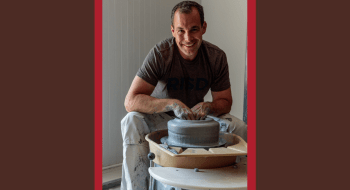
The Amsterdam News covers the complexity of the new normal
“I think that there’s so many things that we all should be thinking about,” says St. Lawrence University Trustee Elinor Tatum ’93. “We can’t be going back to business as usual.”
New York Gov. Andrew Cuomo seems to agree, which is why, when he announced the formation of the new New York Forward Reopening Advisory Board to help guide the state’s reopening strategy in the wake of COVID-19, he selected representatives from more than 100 business, educational, and medical institutions, as well as community and civic leaders from across the state. Tatum, owner-publisher of the Amsterdam News, one of the most influential Black-owned news outlets in the world, was among them.
Tatum is no stranger to community leadership. She has spent the last 23 years with her finger on the pulse of her home community in Harlem, New York, and Black communities across America and beyond. As editor-in-chief of the Amsterdam News, Tatum has kept readers informed about critical issues since joining the paper in 1994 and taking the reins of the now 111-year-old publication in 1997, from her father, the late publisher Wilbert A. Tatum. The publication has evolved with the times into what has been characterized as “The New Black View,” while simultaneously recognizing that the Amsterdam News also serves an increasingly multiracial and multiethnic community.
The coverage of the COVID-19 crisis has revealed the severity of problems that are not new to her team of journalists. Racial disparities in access to health care, education, and food security have been elevated due to the pandemic’s devastating and disproportionate impact on communities of color.
“It’s definitely tangible,” says Tatum. “What’s glaring is the differences in the services. We see that in the higher death rates in communities of color.” The overlap of environmental issues with public health consequences has also been elevated as a factor in the unfathomable death toll.
“For example, in New York, we always have seen an over-indexing of issues of asthma in communities of color,” says Tatum. “This is directly related to emissions in those communities from public transportation or cars coming off of major highways, bridges, and tunnels.”
Adding to this, several high-profile fatalities as a result of police brutality and excessive use of force have occurred. The killing of George Floyd in Minneapolis and Breonna Taylor in Louisville, as well as the chilling murder of Ahmaud Arbery by white residents in a Georgia neighborhood, all add to centuries of documented violence against Black Americans that have made headlines. These latest incidents have inspired New Yorkers as well as millions of people around the world to call for racial justice through public protests and marches further complicating an already dizzying confluence of public health stay-at-home-orders, skyrocketing unemployment, and political polarization leading up to the national elections in November.
The challenges of keeping the community informed about all of these issues are both complex but also stunning in simplicity.
“Most newsstands are closed these days,” Tatum states matter-of-factly, explaining that a significant number of her readership is older and depends on the traditional printed newspaper to stay informed. To reach them, Tatum has had to get creative and has partnered with charities providing meals to deliver each issue of the Amsterdam News .
“With their bags of food, they’re getting a newspaper every week,” says Tatum, “which includes a lot of information on the coronavirus and where they can get assistance.” Keeping the community informed is one small way of helping out.
“Everything is changing so quickly,” says Tatum and points to five recent grants that will help the Amsterdam News continue to serve as a reliable news source for the community. “The Borealis grant, which is internet capacity building, has nothing to do with COVID,” she adds. “The Facebook and Google grants are directly related to COVID and are designed to get newsrooms up to speed and to be able to help get their reporters out there through this difficult time.”
Reinventing a traditional newsroom into a virtual operation has not been easy. “It was a lesson we had to learn, but I don’t think we wanted to learn with a trial by fire,” she says. The rapid adjustment to virtual operations has been nothing less than astonishing. For all businesses, this reinvention is going to be making headlines for years to come. Her work with the New York Forward initiative will be one to watch as New York as the world try to navigate the strategies for safely reopening communities. “This new normal,” says Tatum, “is really going to be a new normal.”



